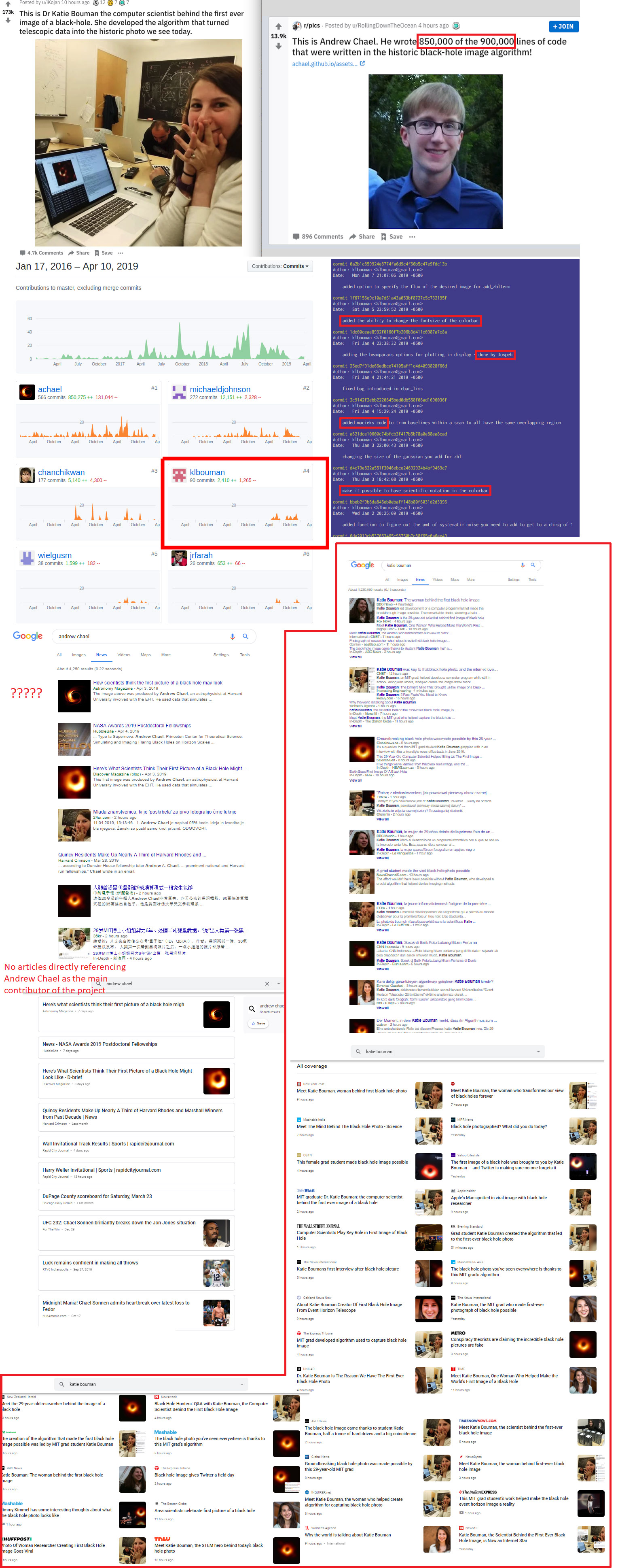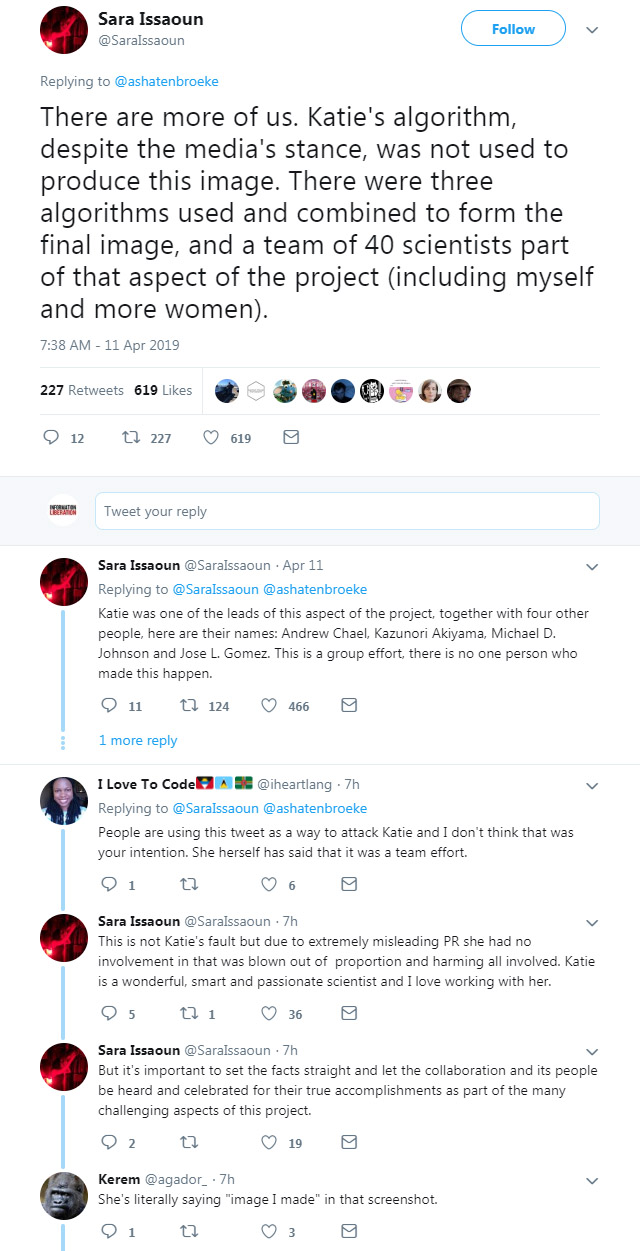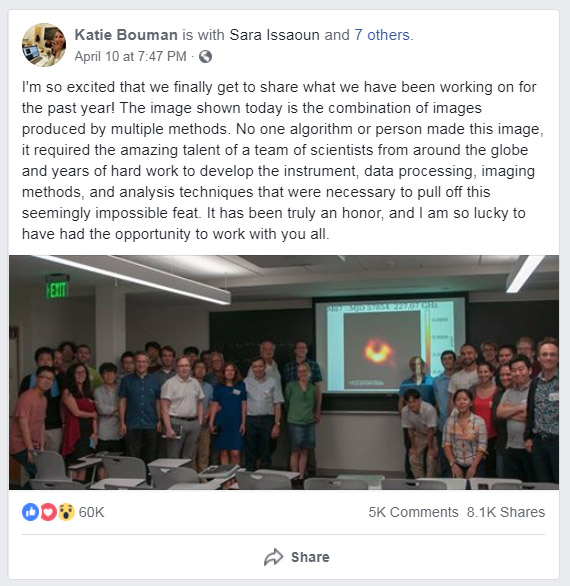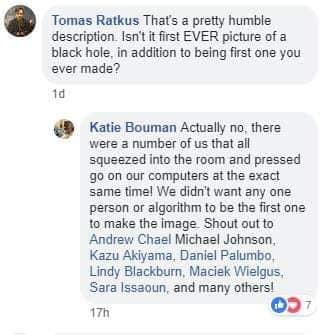NYT: Katie Bouman's Algorithm 'Was Not Ultimately Used' to Create Black Hole ImageChris MenahanInformationLiberation Apr. 12, 2019 |
Popular 
Trump Threatens War With Iran If No Nuclear Deal: 'There Will Be Bombing' Like They've 'Never Seen'

Rabbi Tells Senate Hearing It's 'Not Enough' to Be 'Not Anti-Semitic' - 'One Must Be Anti-Anti-Semitic'

Kentucky Rep. Thomas Massie Introduces 'Dual Loyalty Disclosure Act'

Sen. Schumer: 'My Job is to Keep the Left Pro-Israel'

Randy Fine, Who Celebrated Israel Killing An American Citizen, Struggling in Florida House Race
  The top story pushed by the media on Wednesday was false, according to a new report in the New York Times. The top story pushed by the media on Wednesday was false, according to a new report in the New York Times.From New York Times: As the first-ever picture of a black hole was unveiled this week, another image began making its way around the internet: a photo of a young scientist, clasping her hands over her face and reacting with glee to an image of an orange ring of light, circling a deep, dark abyss.Memes like this one went viral on social media advancing a counter narrative (click to enlarge):  The top left portion shows the coding contributions of their team on GitHub, which is public data. The top right shows Andrew Chael, who contributed the most lines of code to the project (of course, not all lines of code are created equal). Chael browbeat himself on Twitter after this was pointed out and downplayed his own contribution to the project:  Another contributor to the project, Sara Issaoun, also attempted to correct the record on Twitter:  MIT News' article on the black hole images on Wednesday describes this group as the "core team of Haystack scientists who worked on the EHT project":   Bouman clarified Wednesday on Facebook that the project was a team effort:   I'm sure the thousands of media outlets, political pundits and politicians who got this story completely wrong will correct the record any day now! Follow InformationLiberation on Twitter, Facebook, Gab and Minds. |



